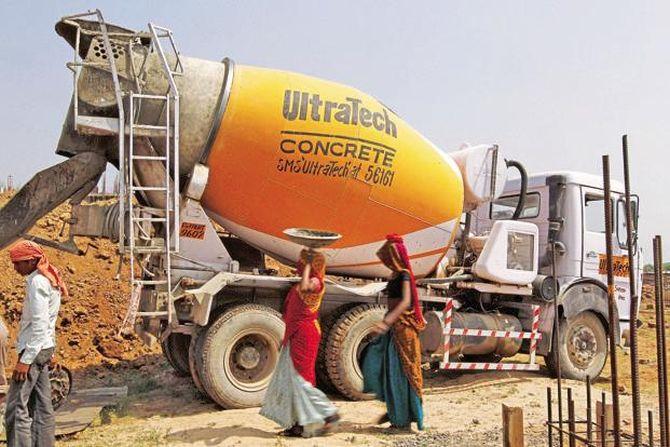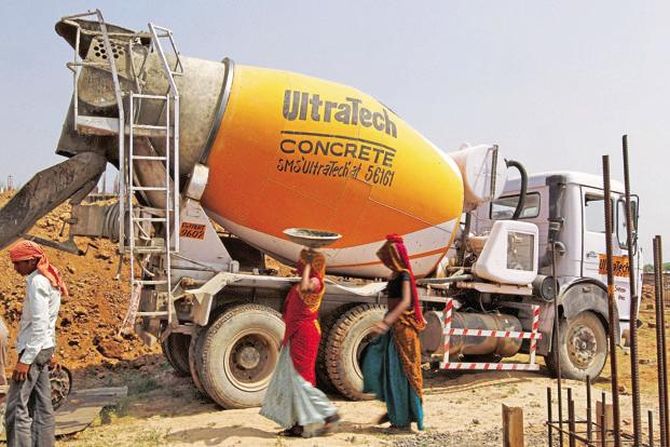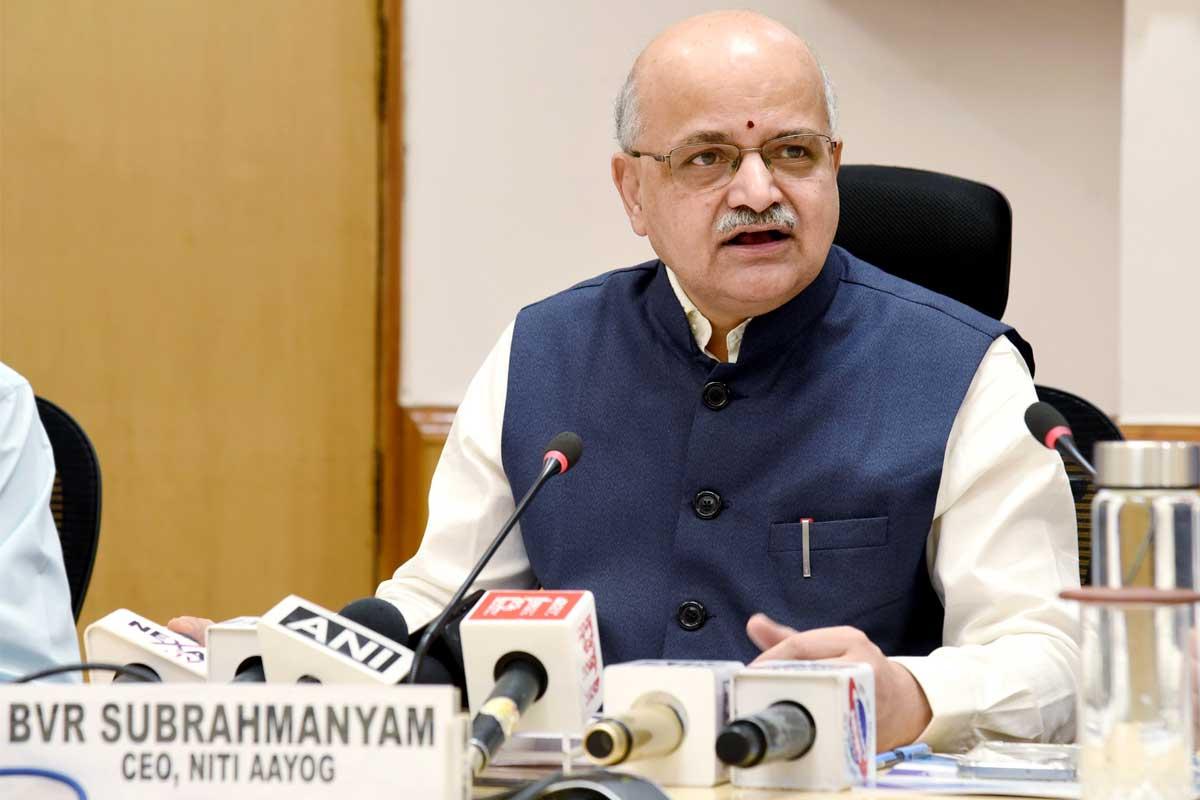Top Indian cement firms are expected to report a strong earnings growth for the second quarter of the financial year 2025-26 (Q2FY26) on a year-on-year (Y-o-Y) basis, amid improved realisations, prices, and steady volume growth, but on a low base.

Photograph: Amit Dave/Reuters
On a Y-o-Y basis, earnings before interest, taxes, depreciation, and amortisation (Ebitda) per tonne are expected to record a sharp increase of 40-70 per cent, due to improved volumes and pricing — which grew by about 5 per cent Y-o-Y to Rs 350-Rs 365 per bag, eventually resulting in better realisations (up 3-5 per cent), according to brokerage reports.
However, on a quarterly basis, the earnings are estimated to witness a decline due to weak demand, higher spending on repair and maintenance, negative operating leverage and negative impact on realisations (down 2 per cent) from soft cement prices (down 2 per cent), according to the analysts at Elara Capital.
The analysts at JM Financial said the industry volume is estimated to have grown by 4–5 per cent Y-o-Y during the quarter.
UltraTech Cement, including India Cements and Kesoram cement volumes, and Ambuja Cements are likely to outperform this growth owing to acquisition-led expansions.
UltraTech, including India Cements and Kesoram cement volumes, is estimated to witness a volume growth of 17 per cent Y-o-Y. However, on a like-for-like basis, the growth is estimated at 4 per cent Y-o-Y.
Ambuja’s volume, including Penna Cement and Orient Cement volumes, is estimated to grow at 15 per cent Y-o-Y.
While on a like-for-like basis, its volume is likely to grow 2 per cent Y-o-Y, analysts at Motilal Oswal Financial Services noted.
After witnessing elevated prices in Q1FY26, cement prices corrected marginally by 0.5-1 per cent in Q2FY26 on the back of extreme monsoon and moderation in demand, according to Axis Securities Equity Research.
Prices typically soften during the monsoon season.
This pressure was potentially exacerbated by the GST rate cut on cement (from 28 per cent to 18 per cent), which was passed on to consumers, leading to a decline in gross retail prices in late Q2.
However, prices are expected to remain higher Y-o-Y due to better price discipline earlier in FY26, healthy cement consumption trends across both rural and urban segments, despite regional variations, analysts at Axis Securities noted.
Analysts at PL Capital attributed the weak volume growth to subdued cement demand during the quarter, impacted by extended rainfall, labour shortages, GST cut anticipation and festive-related disruptions across regions.
Rural and individual homebuilder demand provided only partial support, but was insufficient to offset the slowdown.
Additionally, on a Y-o-Y basis, power and fuel costs are estimated to trend lower by 5-7 per cent.
Diesel prices continued to remain stable during the quarter.
On a Q-o-Q basis, according to Axis Securities Equity Research, power and fuel costs are expected to be higher by 10 per cent for its coverage universe.
Disclaimer: This article is meant for information purposes only. This article and information do not constitute a distribution, an endorsement, an investment advice, an offer to buy or sell or the solicitation of an offer to buy or sell any securities/schemes or any other financial products/investment products mentioned in this article to influence the opinion or behaviour of the investors/recipients.
Any use of the information/any investment and investment related decisions of the investors/recipients are at their sole discretion and risk. Any advice herein is made on a general basis and does not take into account the specific investment objectives of the specific person or group of persons. Opinions expressed herein are subject to change without notice.




